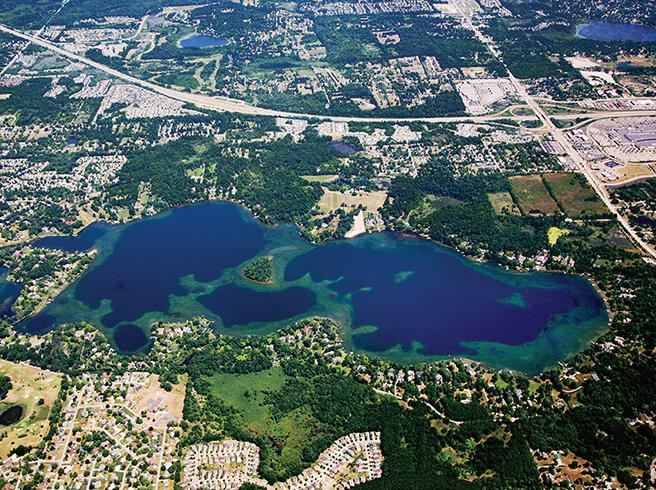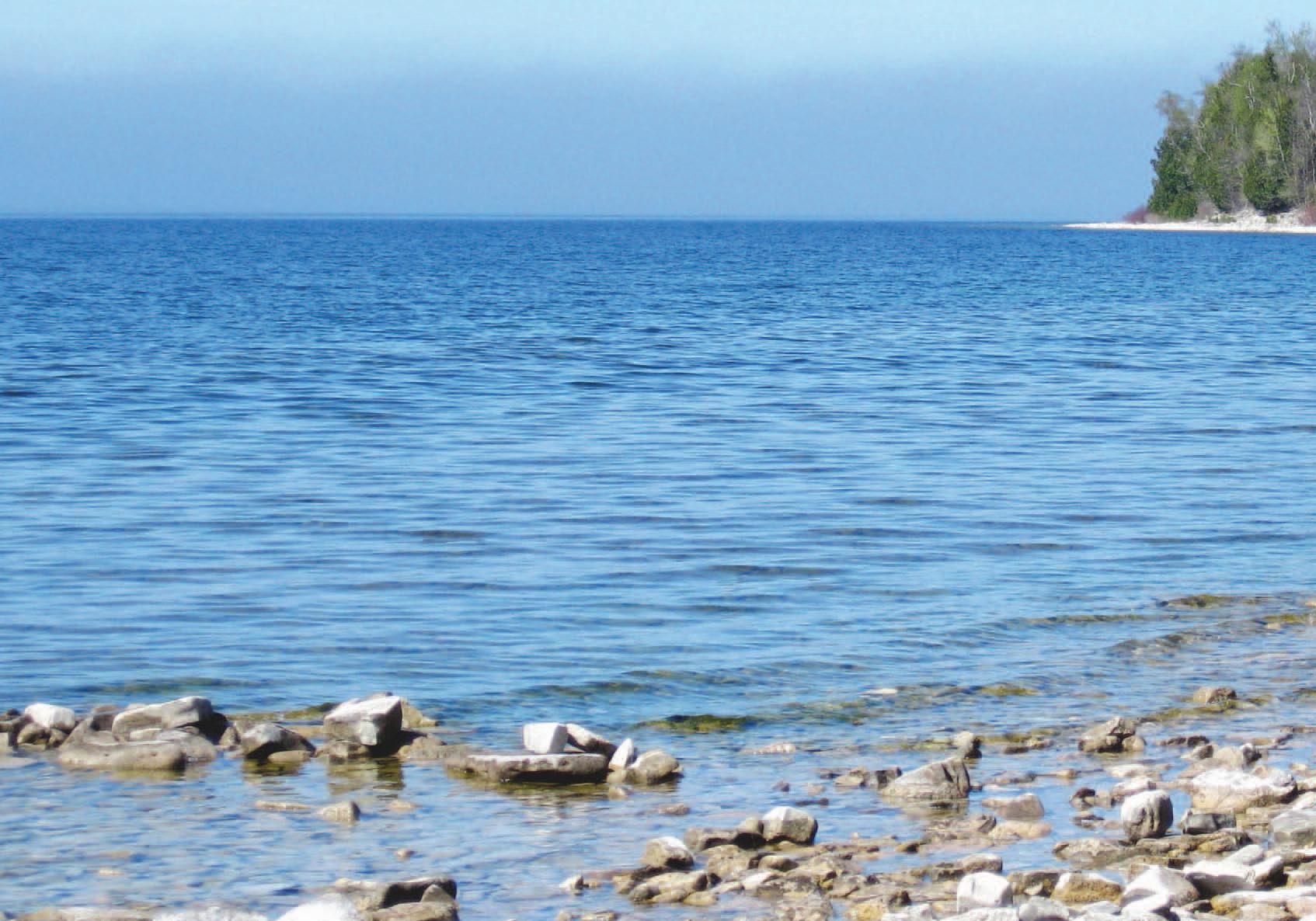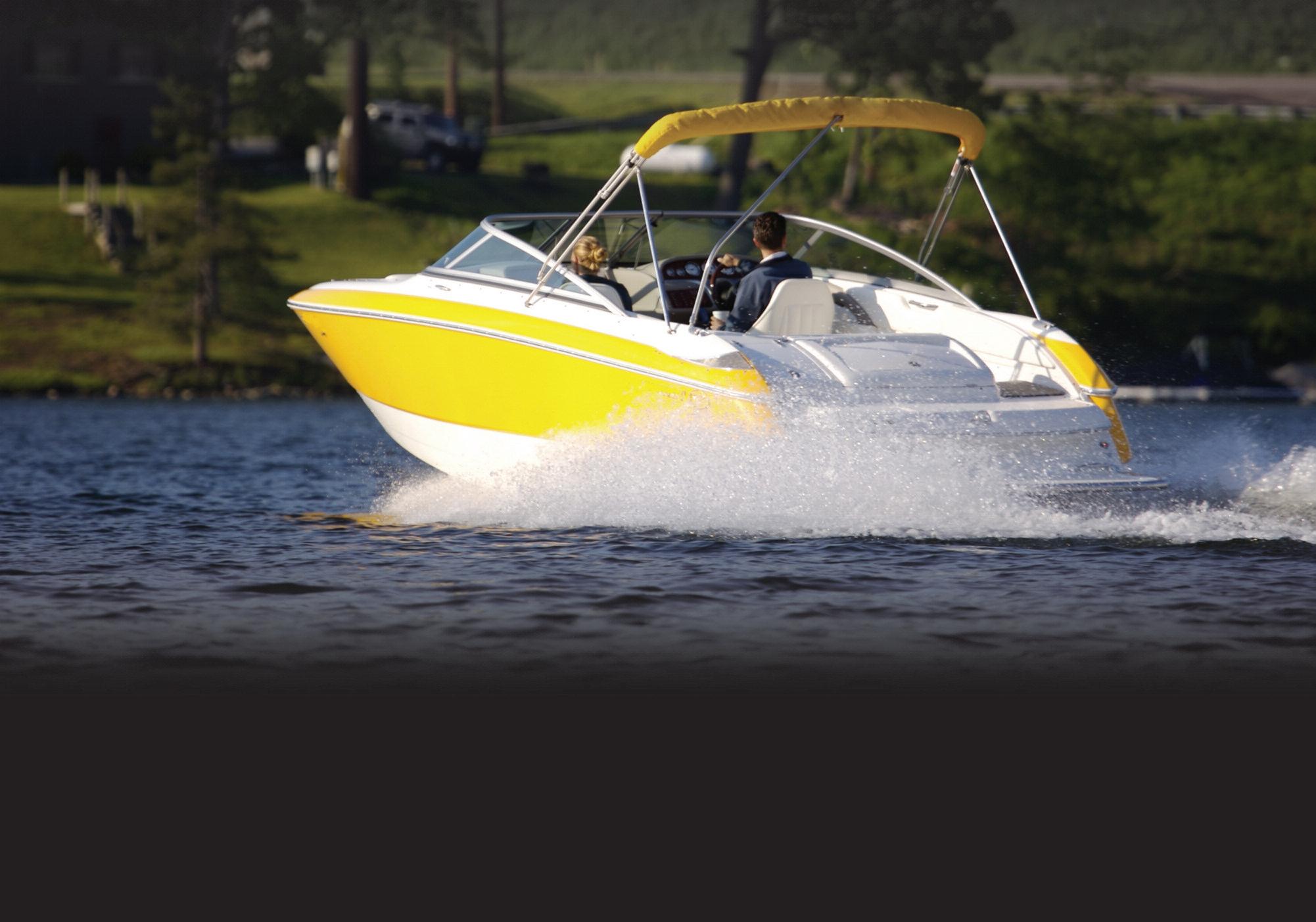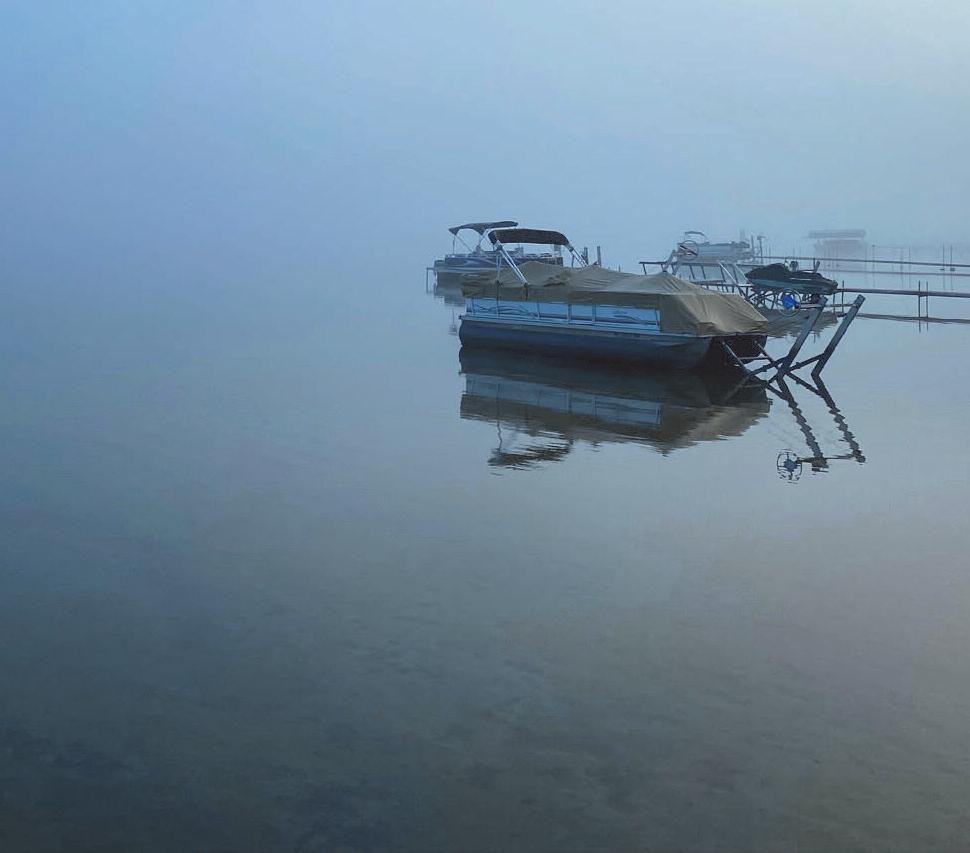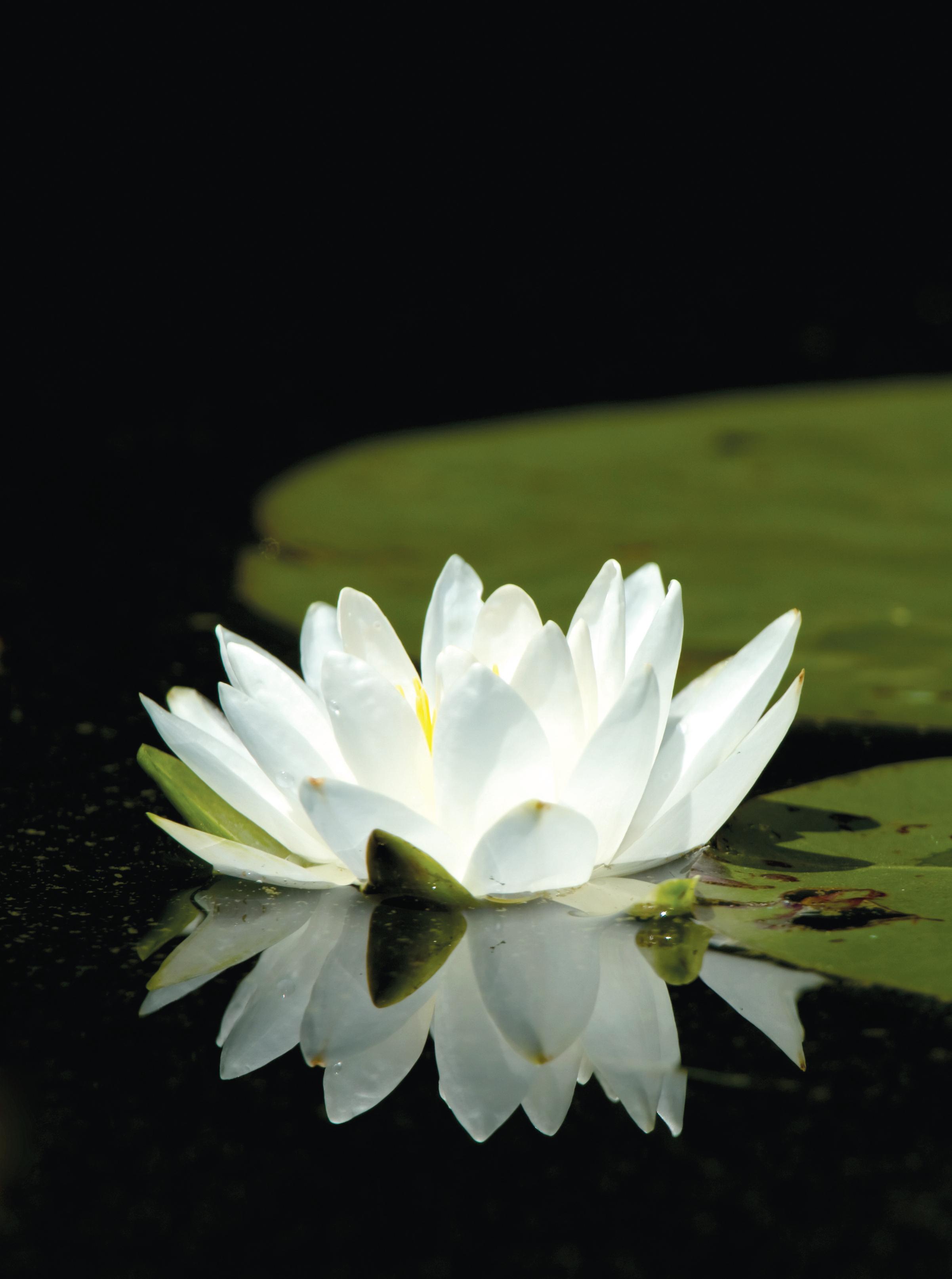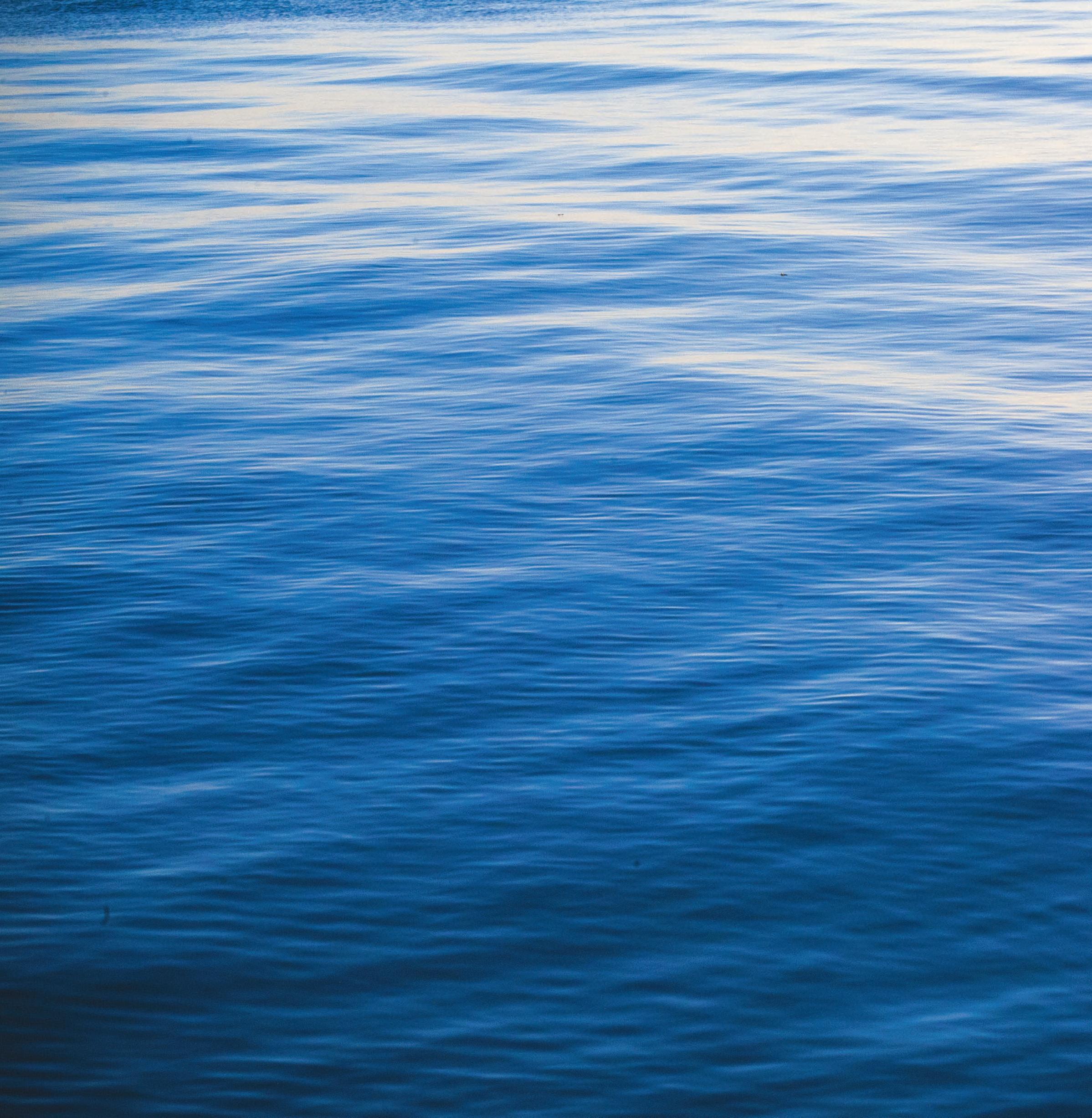

UNWANTED VISITORS
BATTLING TO BLOCK, CONTROL INVASIVE PLANTS, ANIMALS

WONDERS OF ICE AGE
HOW LOCAL LAKES FORMED MILLIONS OF YEARS AGO

METRO INTELLIGENCER THREATENED PLANET LAKES LEVELS































From the Publisher
Publisher David Hohendorf writes about the public feedback to the first two issues of LAKE magazine and the publication’s early focus on environmental issues.
8
Battling invasive species
The state literally spends millions of dollars each budget year to fend off invasive species, both plant and animal, to protect our waterways. We take a look at the efforts to control these unwanted visitors.
20 View from above
An aerial view of Big Lake in Springfield Township.
23
The formation of Oakland’s lakes
If you have ever wondered how the county’s waterways developed as they are today, we take you back many years to look at the formation of Oakland’s many lakes.
30 Threatened Planet
Short notes on what’s happening on the warming planet front here and around the world.
32 Metro Intelligencer News and gossip from the dining world in the metro Detroit area.
34 Lake levels
The latest lake levels as measured by the office of the Oakland County Water Resources Commissioner.









Reader response the past couple of months to our first two issues of LAKE magazine has been most encouraging, especially when we consider that one of the goals or the mission of our publishing group is to “provide a solid news and adver tising product that local residents look for ward to reading ” I have personally received a number of congratulator y emails, including some with suggestions of stories to pursue over the coming months

As we openly state on our masthead page in each issue, “ our goal is to build a community of infor med citizens through the effor ts of our passionate team” which diligently works to explore issues – sometimes quite complicated – that could or, better yet, should be impor tant to those living in Oakland County
It is this commitment to explore topics sometimes off the beaten track for a local news organization that, on the environmental front, prompted us to take a recent look in our companion publication, Downtown Newsmagazine, at methane gas emissions from local landfills; cell tower radiation concer ns; the impact on residents of leaded-fuel smaller airplanes (think the lakes sur rounding the Oakland Inter national Airpor t); the possible bur ying of nuclear waste near the Great Lakes by Canada; the impact of war ming waters of the Great Lakes; or the toxic coal ash legacy of state power plants as Michigan moves to a carbon neutral future
Our pursuit of environmental issues continues with this issue of LAKE magazine as we explore the topic of invasive species that challenge the inland lakes of Oakland County and the state of Michigan Millions upon millions of dollars are spent each year to combat invasive species, as outlined in the longfor m stor y by Mark Stowers in this issue It is a never-ending battle to attempt to prevent the introduction of invasive species or control those already present that have the ability to upset the ecological balance of our local water ways
Our topics may not be ever yone ’ s cup of tea, so to speak But what we present is impor tant so that whenever possible you, as a lakefront resident in
Oakland, can help insure that the quality of your lake is being protected
The focus on the quality of local lakes is par t of the larger concer n about the environment in general as the nation addresses the issue of global war ming, a task that must be embraced by this generation if we are to leave our planet in better shape for those who follow us here
Yes, we will be broadening in coming months some of the topics we cover in LAKE magazine, such as home design, for example But we will always keep environmental issues as the mainstay of the magazine Out of the 83 counties in the state of Michigan, Oakland County has the largest number of inland lakes These water ways contribute so much to the quality of life here and how we concer n ourselves with the health of the lakes says a lot about our attitude in general about the environment
The environment and global war ming remain among the highest ranking issues in repeated polls in recent years In late June of this year the United Nations (UN) released a world-wide poll involving 75,000 respondents who were inter viewed in 77 countries in 87 different languages
Of those inter viewed, 80 percent wanted their gover nment to increase effor ts to address climate change
Aside from the recent world-wide poll, just how well are the various nations per for ming on reaching agreed upon goals to control climate change? A ranking of the 193 UN member states showed that no nation is ranked as having achieved 100 percent of the climate action goals and the United States was ranked as 46th in overall per for mance
Whether on the world stage or closer to home with the lakes upon which we live, we have our work cut out for us
David Hohendor f Publisher










a MeMber of dowNtowN PubliCatioNs
Publisher David Hohendorf
News editor Lisa Brody
News staff/CoNtributors
Hillary Brody Anchill | Dana Casadei | Tracy Donohue | Kevin Elliott | Stacy Gittleman | Austen Hohendorf Grace Lovins | Jeanine Matlow | Gigi Nichols | Susan Peck | Carla Schwartz | Mark H. Stowers
advertisiNg direCtor David Hohendorf
advertisiNg sales Pat Collins
graPhiCs/it MaNager Chris Grammer
offiCe 970 E Maple Road / Ste 3, Birmingham MI 48009 248 792 6464
MailiNg PO Box 1630 Birmingham MI 48012-1630
doWNtoWN PUBLIcAtIoNS GoALS/MISSIoN
The personnel at Downtown Publications bring a special commitment to the publishing effort Our mission dictates that we strive to provide a solid news and advertising product that local residents look forward to reading. Our goal is to build a community of informed citizens through the efforts of our passionate team We are innovators producing products that go well beyond what others offer
dIStrIBUtIoN/SUBScrIPtIoNS
LAKE magazine is mailed monthly at no charge to over 17,000 lakefront homes in Oakland County
For those not receiving a free mail copy, paid subscriptions are available To secure a paid subscription, go to our website (lakemagazine media) and click on “subscriptions” in the top index and place your order or scan the QR Code here

INcoMING/rEAdEr FEEdBAcK
We welcome feedback on both our publication and general issues of concer n Opinions can be sent via e-mail to news@downtownpublications com or mailed to Downtown Publications, PO Box 1630 Birmingham MI 48012-1630 If you are using the mail option, you must include a phone number for verification purposes.










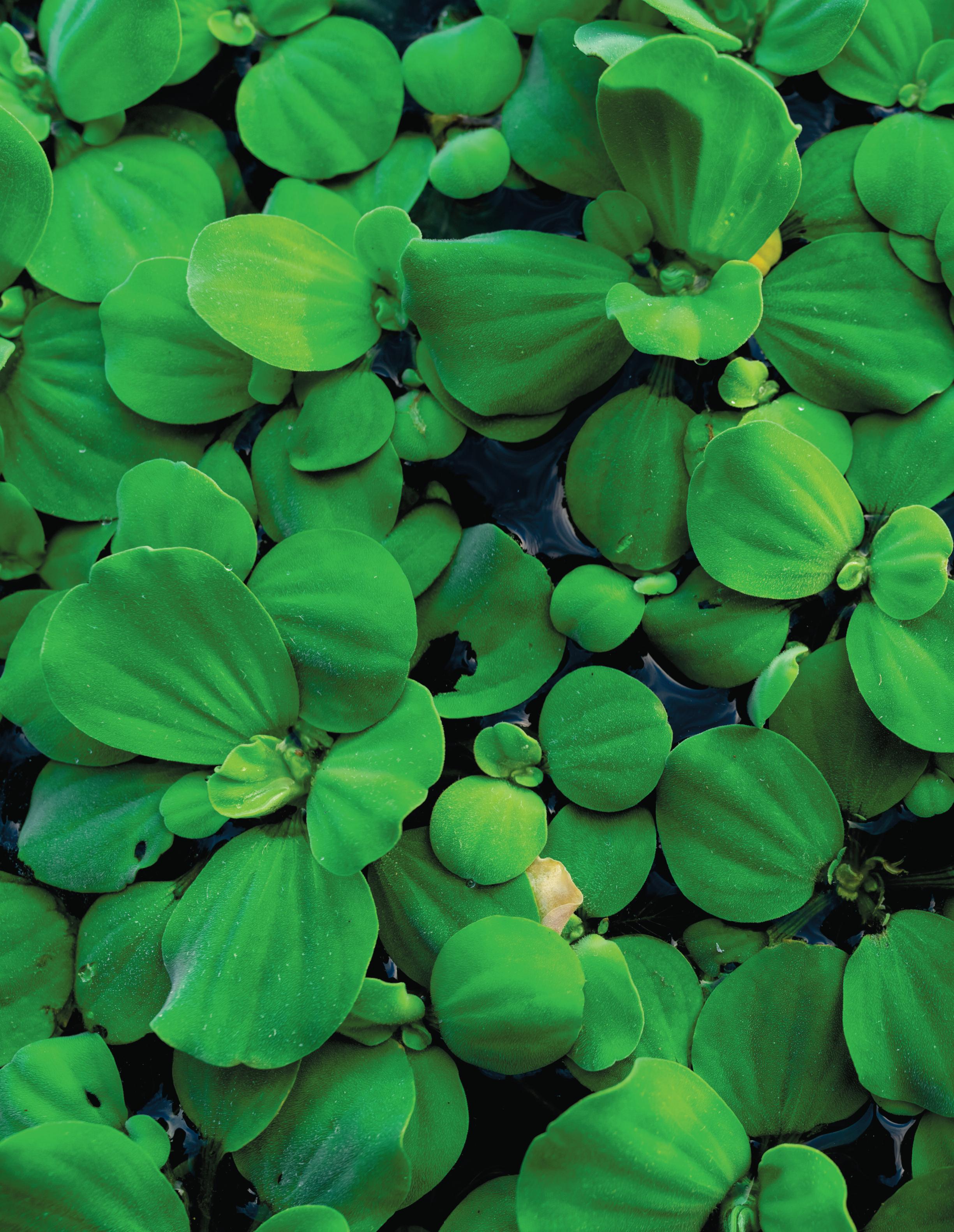




Michigan prides itself on tourism from its natural beauty but some visitors are unwelcome. Invasive species, both plants and animals, have made their way to the mitten state creating millions of dollars of havoc and damage to its lakes and land. State and federal agencies in sync with private sector and volunteer groups have been fighting the good fight to keep Michigan from being over taken by these unwanted visitors.
Since the beginning of time, there have been invasive plants and animals. Moving by themselves or with help from travelers, both knowing and unknowing, hundreds of species of plants and animals have relocated throughout the world. In Michigan, nearly 200 aquatic and ter restrial invasive species have been identified across the Great Lakes. Inland lakes have their fair share of those plants along with unwanted animals. The battle to fight invasive species is shared by academia, gover nment agencies and the private sector and caring volunteers. Time and money are needed in great supply to keep the battle going. But since 2006, there has been a decrease of 85 percent of new invasives finding their way to Michigan.
The Michigan website Michigan gov/invasives describes “an invasive species is one that is not native and whose introduction causes har m, or is likely to cause har m to Michigan's economy, environment, or human health.”
Michigan has plenty of nonnative species including fr uits, vegetables, field crops, livestock and domestic animals that have been impor tant to the Michigan economy and lifestyle Most nonnative species are not har mful and may provide economic benefits But invasive species cause har m when they out-compete native species by reproducing and spreading rapidly in areas where they have no natural predators and change the balance of the ecosystems we rely on
The fight isn’t cheap but monies being spent are producing positive results The tab for mitigating just the invasive sea lamprey tops out at $26 million per year Invasive aquatic species plague the entire world but in the Great Lakes region, it is estimated, according to the Anderson Economic Group, “while comprehensive cost estimates (including all industries, species, and water ways of the Great Lakes region) are not available, there are many individual estimates focusing on par t of the problem These estimates range from millions of dollars in cost and lost output for individual large industrial and power facilities to hundreds of dollars annually spent by individual households to control AIS (aquatic invasive species) on their proper ty It is likely that the overall aggregate level of cost to the Great Lakes region is significantly over $100 million annually ”
The dollars and cents of deter ring aquatic invasive species continues to grow In 2005, the estimated cur rent cost of aquatic invasives damages in the Great Lakes region was $5 7 billion annually As new invasives ar rive, that number only grows
Monies to fight invasive species has grown exponentially in the past decade and half Michigan only had $24,000 in dedicated funding for these effor ts in 2010 That amount has grown to about $9 million annually, including 2010 Great Lakes Restoration Initiative federal dollars and a $5 million dollar state appropriation
legislators created in 2014 State and federal agencies par tner together working from the academic, gover nment agencies and private business viewpoint to help fight invasives Some of those agencies include the state cooperative – the Michigan Invasive Species Program (MISP) that encompasses the Michigan Depar tments of Agriculture and Rural Development (MDARD,) Natural Resources (DNR) and Environment, Great Lakes and Energy (EGLE ) A por tion of the MISP is dedicated to funding for the 22 cooperative invasive species management areas (CISMA) across Michigan that suppor t locally led invasive species initiatives Most of
In 2005, the estimated cost of aquatic invasives damages in the Great Lakes region was $5.7 billion annually. As new invasives arrive, that number only grows.
the 22 are multiple counties and townships but Oakland County has a CISMA dedicated to it alone Federal agencies include the NOAA GLERL – or its full name, National Oceanic and Atmospheric Association Great Lakes Environmental Research Laborator y The Michigan Invasive Species Program 2022 Annual Repor t lists the goals of the program as prevent introduction of new invasive species to Michigan; limit the dispersal of established invasive species populations throughout Michigan; develop a statewide, interagency, invasive species Early Detection and Response Program to
address new invasions; and manage and control invasive species to minimize har mful environmental, economic and public health effects resulting from established populations
Prevention, the first goal of the MISP , has included the state looking at Michigan boaters as a big par t of the process DNR law enforcement spent more than 6,200 man hours of enforcement in 2022 – double the time spent in 2019 – to educate the public at state managed boating access sites The “Clean, Drain and Dr y ” message to boaters was broadcast liberally In 2019, the state stepped up requiring Michigan boaters by law to remove drain plugs, drain all water from bilges, ballast tanks and live well and to remove aquatic organisms and plants from boats and trailers before transpor t In 2022, Gover nor Gretchen Whitmer proclaimed the week of July 3-9 as Aquatic Invasive Species Awareness Week
The second goal of limiting dispersal has included the DNR’s IdentiFriday social media challenge that was deemed successful in putting invasive species education and awareness in front of new audiences The Michigan Clean Marina Foundation came on board with the “Clean, Drain, Dr y ” message through ads placed in popular boating and leisure magazines and industr y newsletters
Its early detection and response were successful in eradicating Par rot feather – a fast spreading aquatic plant The invasive was found in 12 locations, probably due to dumping of aquarium water or water garden escapes EGLE deter mined the plant was eradicated af ter monitoring the sites for three consecutive years When water lettuce was found in the Nor th Branch and Lower Clinton rivers and the McBride Drain, the Lake St Clair CISMA aler ted the public to look for the plant that looks like a floating open head of lettuce and repor t it Af ter one repor t, more than 3,400 pounds of the invasive
plant, along with an invasive water hyacinth, was removed from the drain
Another early detection method, Environmental DNA (eDNA) testing has been successful as well In collecting water samples on the Great Lakes, biologists can detect genetic codes of plants, animals and diseases More than 10,000 water samples are taken each year to look for signs of invasive bighead and silver carp
The goal to minimize har mful effects from established invasive plants has included a DNR volunteer stewardship program With these volunteers in full force, the Upper Peninsula Conser vation and Development Council and the U P CISMA found and removed invasive phragmites beginning in 2013 A decade and $2 7 million dollars in grants later, more than 10,000 acres have been sur veyed –treating 3,800 acres and more than one million people educated about invasive phragmites The invasive is now in maintenance mode and any regrowth is treated annually With this positive work being done, CISMAs across the state have tur ned their attention to the European frog-bit invasive Sur veys have led to newly detected infestations along with uncovering more phragmites, Himalayan balsam, flowering r ush and purple loosestrife
Professor Kendra Spence Cher uvelil, Dean of the Lyman Briggs College, Depar tment of Fisheries and Wildlife at Michigan State University, works on the educational side of invasive species battle
“I like to use the definition that invasives are species that are nonnative and nuisance,” Cher uvelil explained
Each invasive species has its own set of problems affecting quite a few pieces of the outdoor puzzle of lakes
“ There can be a range of effects, depending on the invasive species you are talking about and the ecosystem of interest because each
lake will respond differently depending on its histor y, its setting, and its cur rent uses and stresses,” she said “For example, shallow lakes that are sur rounded by suburban/urban development will respond differently than deep lakes and those that are sur rounded by undeveloped lands in Oakland County One of the invasives that I have been most involved in is the aquatic plant Eurasian water milfoil, which becomes especially problematic in all-spor ts lakes with lots of boat traffic because that plant, when broken up by boat motors into fragments, those fragments for m new plants ”
Invasive species bring different levels of threats
DNR law enforcement spent more than 6,200 man hours of enforcement in 2022 – double the time spent in 2019 –to educate the public at state managed boating access sites.
“ What is the biggest ‘threat’ depending on what you are most interested in? For example, if you care most about proper ty values, loss of native species or loss of recreational or other uses, for example,” she said
Each group of invasive species opponents work to find ways to either eradicate or mitigate each one Cher uvelil noted, “ The best way to counter invasives is to prevent their introduction in the first point, which means lots of education and communication For example, making sure that folks know what to do with an unwanted plant or pet (rather
than release it to the wild) ”
Cher uvelil’s par t in the overall picture is hours and hours of examination and study
“I am a researcher, so I help to infor m understanding of the impacts of invasives on lake ecosystems,” she said “Prevention is key But we can all also help by doing things like planting natives and pulling and cor rectly disposing of invasives like garlic mustard on our own proper ties and in our neighborhoods ”
There are 56 prohibited and restricted species that include plants, animals, fish, mollusks and crayfish by the state of Michigan The list of invasives includes birds, cr ustaceans, diseases, fish, insects, mammals, mollusks, plants and wor ms The state of Michigan either prohibits or restricts many invasives as “unlawful to possess, introduce, impor t, sell or offer that species for sale as a live organism, except under cer tain circumstances ”
The invasive fish categor y includes include bighead carp, black carp, grass carp and silver carp and more Though not found in Michigan or the Great Lakes cur rently, much is being done to negate their advancement nor th These fish were first introduced to the United States in the 1970s to control algae, weed and parasite growth in aquatic far ms, weeds in canal systems, and as one for m of sewage treatment
These captive fish eventually escaped into the Mississippi River basin and established breeding populations These invasive carp are slowly making their way up the Mississippi River and its tributaries and have been found as far nor th as Minnesota, including individual silver and bighead carps within the Mississippi National River and Recreation Area The Great Lakes are in danger of becoming infested if the carp make it through the Chicago River Invasive carp cause serious damage to the native fish populations in the lakes and rivers that they infest because they beat
out other fish for food and space Carp are also thought to lower water quality, which can kill off sensitive organisms like native freshwater mussels Invasive carp have been known to dominate entire streams and effectively push out the native species
In addition to the har m caused under water, silver carp are known to jump out of the water to escape threats They can injure boaters, skiers and damage boats and onboard equipment Exper ts wor r y that if these fish find their way to the Great Lakes, they may negatively affect the area's $7 billion a year fishing industr y By out-competing native fish species for food and habitat, carp may reduce the populations of native fish that are so impor tant to anglers
In 2022, the US Ar my Corps of Engineers announced a project for $226 million dollars to complete a design on the Brandon Road Interbasin Project, an $858 million effor t to keep carp downstream of Joliet, Illinois in the Des Plaines River – and out of the Great Lakes Advocates applaud the project but note that other pathways to the Great Lakes need to be closed off as well Electronic bar riers have gaps when they are lowered to allow barges to traverse This could allow small fish the oppor tunity to get through No system seems to be completely infallible to the carp problem
The corps project will take six to eight years to complete and will have several layers of prevention against the invasive carp New bar riers with stronger jolts at the Lockpor t bar rier – bubble screens created to prevent carp and their eggs and lar vae from attaching to any barges along with noise broadcast into the water to hopefully prompt fish to swim away from the lock and toward a dam area where fisher man congregate More electronic and bubble screens will be deployed upstream as well The costs to r un the electronic bar rier system is around $13 million
dollars annually and Michigan helps foot the bill, providing $8 million dollars This cost is shared by Great Lake states and the federal gover nment The project could possibly be completed in 2030
Ecologist Peter Alsip with the National Oceanic and Atmospheric Administration Great Lakes Environmental Research Laborator y has been creating models to predict/protect ecosystems In par ticular, he has modeled habitat suitability in Lake Michigan regarding invasive carp
“One is cur rently reproducing in the tributaries of Lake Erie – Grass Carp,” Alsip said “ The Black Carp, Silver and Bighead Carp swim up in
An early detection method, Environmental DNA testing has been successful. In collecting water samples on the Great Lakes, biologists can detect genetic codes of plants, animals and diseases.
the water column and eat algae and zooplankton The processed based models I do, we set up what the lake looks like and based on what we know about how water is transpor ted across the lake and is heated and cooled down, we simulate those hydrodynamics and take what we know about cer tain biological processes and code them into the model to simulate the transfer energy and nutrients ”
This bio -physical model shows where invasive carp could prosper
“ We can lear n how fast they can grow or how well they can grow in cer tain environments The lake model shows data on algae
abundance, zooplankton abundance and water temperature We feed that into the fish growth model and see where there is enough food in Lake Michigan to sur vive and grow
There is skepticism that Silver and Bighead Carp can grow in as Lake Michigan has primarily become a plankton deser t and these fish rely on plankton ”
There are cer tain areas where the fish could do ver y well, such as Green Bay and other near shore areas where nutrients r unning off the land that would spur the growth of algae
“Most of the lake is a poor habitat where these fish could maintain their weight and fish wouldn’t want to hang out there But with minimal suitably habitats, these fish are going to have to cross long distances of the lake if they got in in order to get to those more favorable habitats,” Alsip said “Our model shows that these migration cor ridors may not be as much of a bar rier as we thought The spread of these fish in Lake Michigan –they could get to where they need to go to have a detrimental impact ”
One invasive that has found its way to the Great Lakes is the sea lamprey According to the Great Lakes Fisher y Commission, “Sea lampreys have had an enor mous negative impact on the Great Lakes fisher y, inflicting immense damage Before the sea lamprey invasion, Canada and the United States har vested nearly 15 million pounds of lake trout in the upper Great Lakes annually By the late 1940s, sea lamprey populations had exploded and were feeding on large numbers of lake trout, lake whitefish and ciscoes – fish that were the mainstays of a thriving Great Lakes fisher y By the early 1960s, the catch had dropped dramatically, to approximately 300,000 pounds, about two percent of the previous average During the time of highest sea lamprey abundance, up to 85 percent of fish that were not killed by sea lampreys were marked with sea lamprey attack wounds The once thriving
fisheries were devastated, and along with them, the hundreds of thousands of jobs related to the region’s economy ”
Dr Donna Kashian, professor at Wayne State University and Director of Environmental Science, has studied sea lampreys in her research
“ They're working really hard to tr y and keep the lamprey under control, but they're not going anywhere,” Kashian explained “ They've introduced sterile males into the population, done various things They came when St Lawrence Seaway was opened They came up through the Atlantic Ocean Before, Niagara Falls was the bar rier, and so that would block things coming in Once they opened, it was the Arian Welland Canal (in Ontario, Canada ) And once they opened those two canals, ships star ted coming through to the Great Lakes ”
Kashian has been working on the educational side of invasive species and more for the past two decades One of the worst invasive species she has encountered are the zebra and quagga mussels
“ Those came over in the ballast water ships,” Kashian said “ The zebra mussel was the one first identified in the mid-80s, somewhere around 1986, in the Lake St Clair region Then the zebra mussels went nuts They took over And they're really par ticular about where they attach It has to be a hard sur face Breaker walls, unfor tunately, pipes, like intake pipes for drinking water Fer mi – the nuclear power plant was having problems because they were clogging intake pipes at the nuclear power plant for the cooling towers And so, they've been working to tr y and figure out how to control the zebra mussels ”
She noted, “ There's been a shif t in the last 10 years to quagga mussels They look exactly the same, but they can sur vive colder water and they don't need hard sur faces They can be in the sand So now we have areas that weren't
quite as vulnerable to them Now they blanket the bottom of Lake Michigan And they filter water at these really, really high rates That takes all the algae and all the nutrients out of the water that is the base of the food chain Because of this, fisheries are collapsing too ”
Kashian explained that once an invasive species such as zebra and quagga mussels take hold, “there's no going back for these invasive species If they don't get rid of it to begin with, you can't get rid of it once it's established and reproducing and propagating That's what we know with the mussels, we're never going to have a Great Lakes system without the mussels They're par t of the fauna
The costs to run the electronic barrier is around $13 million dollars annually, with Michigan providing $8 million dollars. This cost is shared by Great Lakes states and the federal government.
now, so the question is, what do the Great Lakes look like over time with the mussels, and when will the numbers stabilize?”
Research indicates the mussels are star ting to stabilize but other invasives have followed “ We've got another invasive species coming in that was native to where the mussels were and that's the round goby,” Kashian said “ When the mussels got here, there was nothing eating them, but now we are seeing mussels in the stomachs of walleye, which do belong here, and round goby The problem is round gobies are invasive and are causing their own
problems, but at least they're consuming some of the mussels ”
According to the invasivespeciescentre ca website, “Round goby decrease the levels of native fish by eating eggs and competing for food It is also suggested that round goby pass a strain of botulism to the birds and fish that eat them; this toxin comes from the zebra mussels that the goby eat and causes fish and bird death ”
Kashian’s lab has been looking at control methods for the past decade in regard to the mussel problem “ We discovered a compound produced by algae or cyanobacteria, har mful algae, that stops reproduction in mussels We are tr ying to isolate that chemical to use it in control If we are able to identif y it, if we're able to mass market it, you still can't treat an entire Great Lake You can use it in marinas where they're attached to boats, points of entr y, or around pipes, nuclear power plant pipes, drinking water pipes, places like that ”
Kashian needs more money and more chemists for the ongoing research “ We still have not been able to find the chemical We've r un it through mass spec and we're str uggling with it We're looking to switch up the chemists and take a totally different kind of chemical approach to it But yes, we had funding with USGS for that for about four years And in those four years, we got pretty far We were able to document that we found the chemical There's no doubt we found the chemical We're able to document it stops muscles anywhere ”
She did note that the zebra mussels can have a beautif ying yet still har mful effect on lakes
“Because they filter the water so much, they've made the lakes look a lot cleaner Lakes used to look a lot murkier but they filter the water and they're cleaning the water So, in the 70s when Lake Erie looked really, really bad, zebra mussels played a huge role in helping clean up that lake,” Kashian said “It took
the contaminants in the water and moved it into the sediment And I don't want to say some good things come out of it but that is something that came out of it that appears to be beneficial ”
Erica Clites is an extension educator with Michigan Sea Grant College Program Based in 34 coastal states it includes the Atlantic and Pacific Coast and all of the Great Lakes states
“ We're kind of based on the model of cooperative extension If you're familiar with agricultural extension or extension agents, it's a similar idea, just focused on the water We've been around for 50 years We facilitate science research and a lot of education and outreach about whatever our body of water is In Michigan we focus on the Great Lakes We focus on coastal counties that are along the Great Lakes coast,” she explained
Clites for merly worked with the Oakland County CISMA as an Invasive Species Coordinator The most common invasive plants in her career have been the phragmites, Eurasian milfoil and Star r y Stonewor t algae
“ The reason that they're invasive is that they were not here prior to European settlement If it was something that has been here for 500 years or 1,000 years, then we wouldn't really consider it to be invasive But if it's invasive, that means that it is something that has not been here for a long time,”
Clites explained “Phragmites is a good example It's over 100 years at least But then the other thing that's tricky about invasives is that their impact changes over time It didn't used to be as common and widespread as it is now And it was only 20 or so years ago when it star ted to expand more That’s not an uncommon stor y with invasives ”
Phragmites take over and change the ecosystem of a pond or lake
“A wetland’s natural ecosystems is ver y diverse in what's present in them When phragmites come in, it
might go from 15 or so different species down to just one or maybe two on the edges It just outcompetes ever ything else that's there It reduces the diversity of the habitat which also reduces its functionality for shelter for animals or food,” Clites said Phragmites are usually controlled using biocontrol Experimental ones are in place in Canada where an insect is inser ted into the stem of the plant “ The reason that biocontrol is tricky is because we ’ re not going to release it if it's something that would impact invasive species as well as our native species You have to find something that is so specific that it will only be released We do
We're never going to have a Great Lakes system without the mussels. They're part of the fauna now, so the question is, what do the Great Lakes look like over time and when will the numbers stabilize.
have a native her mit, it's a different species in the state, so it has to be something that would impact the invasive one, but not the native one And so that's why it can take a long time sometimes to develop those types of biocontrols,” she explained
Other options in the U S include herbicides that are approved for phragmites The plant can also be cut below the water line causing them to drown “If it's in enough water or you do it enough times, that will eventually kill the plant because it can't keep regrowing to get out of the water,” Clites said She works to educate folks on
invasives and one creative way is through paddle boarding "I lead a program called ‘My Paddle Stewards ’ That's where we teach paddlers how to identif y and repor t invasive species that they find,” she said
William “Bill” Keiper is an aquatic biologist for the Depar tment of Environment, Great Lakes and Energy (EGLE) and specializes in aquatic invasive species early detection and response With EGLE since 2010 and working primarily aquatic invasive plants since 2015, he covers the entire state “ We work across the depar tment, so it's kind of a unique thing for invasive species I work really closely with folks from DNR, the different divisions, and MDARD Specifically within EGLE, though, for invasive species, there's only four of us DNR is responsible for invasive carp and fishes ”
Keiper is on the move constantly “ Whenever stuff pops up in the state, we respond to it Typically, it's souther n Michigan That's where most of our invasive species come in,” Keiper explained “ We've had several instances in Oakland County, because there's a lot of lakes there, and there's a lot of people Souther n Michigan in par ticular is generally the biggest hotspot for invasive species to show up, both ter restrial and aquatic There's never a nor mal day anymore It's so variable I spend most of my time on the computer writing repor ts and fielding repor ts for new stuff that's popping up, and planning and coordinating, it just depends on the day But I do get to spend a fair amount of time out in the field doing sur veys in the lakes in Oakland County, looking for new species in lakes that we identif y are high priority We're also out on the field doing sur veys ”
Keiper works as the middleman in the invasive species chain He gets a repor t and checks it out and sends it on to the folks who eradicate and mitigate
“If it's something that requires an herbicide treatment, we don't do the
treatments ourselves We contract it out If it's a species like water lettuce, for example, but it's really easy to hand remove, there's no need to herbicide, we'll just pull it out ourselves There's no need to get anybody else involved A lot of times it's coordinating in the kind of middle person tasks ”
Keiper has seen plenty of invasives and lists his top species “From an established standpoint, or species that are established and widespread – phragmites, Eurasian milfoil – those are ver y problematic because they're so widespread
There are cer tainly control options available, but because this year the extensiveness of them, that it's It's a big financial burden My work focuses more on the next up and comer I work on our watch list species, which are species that are either not yet here, or if they are here, in a really limited abundance
Those are the ones that kind of keep me up at night, and that I wor r y about personally We coordinate across the Great Lakes basins and we have a pretty good network of agencies and folks across the basins Then we also have contacts outside of the basins watching for those next species that are moving nor th or moving from the east We’re really tr ying to prevent them from becoming the next phragmites and the next Eurasian milfoil or Star r y Stor mwor t Prevention is the key Prevention is the best step we can do, and that's why we pour lots of money across the state, across the program into prevention ”
Dick Pinagel of Aqua Weed Control and John DeLisle of Natural Community Ser vices are on the frontlines of fighting aquatic invasive plants Using physical removal and chemicals that have been both state and federally vetted, they continue to fight the good fight
“ We use approved aquatic herbicides,” Pinagel said “Our primar y method of controlling invasive species aquatic plants is through two chemicals, aquatic
herbicides and algaecides approved by the EPA then fur ther approved by Michigan Depar tment of Agriculture (MDARD) and then fur ther restricted and allowed by a per mit by EGLE There are three layers that these products have to jump through to be approved here in Michigan ”
An herbicide is used for rooted plants and algicides attack algaes Pinagel notes he doesn’t see much eradication but more mitigation
“ We don't conquer them In fact, we don't use the word eradication anymore EGLE won't as well There's really no such thing as eradication,” he said
The chemicals have basically stood the test of time but mostly
Other options in the U.S. include herbicides that are approved for phragmites. The plant can also be cut below the water line, causing them to drown. If it's in enough water or you do it enough times, that will kill the plant.
because it takes more than $100 million dollars to fund and test and get a new pesticide approved federally, according to Pinagel
“ There's been a few new approved aquatic pesticides introduced over the years that make their way into Michigan, a handful We're a small market as compared to agriculture As an industr y, we're minuscule We just don't command the research We tend to see products that sor t of are a knockoff from ag that show aquatic applications and then they make it through the EPA approval, which is about $120 million to get an aquatic pesticide through the gauntlet
Because it's got to show not only efficacy but it’s also got to show tolerability against not only all the critters in the water but all the critters also that would eat those critters in the water People of course, number one, humans, if they jump in the water af ter the boat goes by ”
Pinagel has seen products get reduced and eliminated because testing abilities become better “Michigan will then eliminate it from its ability to be per mitted here in Michigan We're seeing tolerance We're experimenting in conjunction with EGLE with different mixes We have to sor t of change things up, a mix, for example So that the plant gets a different look But we are definitely seeing resistance with cer tain invasives for sure ”
The insecticides are applied with in injection system on a specialized boat
“Imagine a tractor spraying on a field that's on a boat,” he said “Imagine that those nozzles are in the water so there's not drif ting of the chemical,” Pinagel said
The private sector companies are nor mally brought in by a lake manager who know and understand the problem
“ They're up on all the different weed species, as we are And then they come in and they'll map them out and then they hire us and we work through them But in many cases we work directly with the homeowners' association And we always come out and do a presur vey Identif y the issue Over the winter we make sure they get their per mit, we get all the paper work in order so that we're ready to go with the state and then that way when spring hits, we're ready to go and we come out and see what they've got, come up with the cost, make sure the cost is acceptable, come up with a date, then do the notifications, the shoreline postings and there's a process and then we do the application We do it by the acre If it's a 20-acre lake and you've only got five acres of an issue, we just focus on the five acres ”
Pinagel has been president of MAMA – the Michigan Aquatic Managers Association – and works with state gover nment to ensure regulations aren’t too restrictive and invasives get the upper hand
“ We work really well with the state We have to – they're our regulator And through our association, we do a give-and-take and we tr y to make it where the per mits are usable and the state wants to make sure that the resource is being protected and we have an interest in that as well ”
He noted, “ We have all kinds in our group The Michigan Lakes and Streams, which tends to be more on the academic side And the Watershed Councils, I've met with all of them over the years And then we have regional groups like Midwest Aquatic Plant Management Society, or MAPMS I've been past president twice of that group We need to maintain a healthy ecosystem with native plants and not wipe ever ything out That's a constant battle with a lot of homeowner's groups They all want the swimming pool mentality, we call it
John DeLisle - CERP , principal ecologist at Natural Community Ser vices (NCS), LLC Ecological Ser vices & Design, explained his company ’ s mission “NCS prioritizes invasive species management based on the ecosystem and management feasibility Some species, like phragmites or autumn olive are so widespread that it is no longer feasible to eradicate them That just means that when we do manage them We focus those effor ts on areas of high ecological impor tance – like a shoreline, savanna, prairie or wetland community,” he said “Invasive species that are not yet widespread or recently detected in our area are the highest management priority for us Special consideration is also given to ‘satellite’ populations of more established species, as they are easier to control than large source populations and treatment prevents them from tur ning into source populations themselves ” Delisle has seen plenty of invasive
species and the list continues to grow “Control and mitigation are practical, whereas eradication isn't typically feasible except for new introductions ”
He is a big proponent of prevention “Prevention, then control, is key for helping to stop the spread of invasive species Cer tain invasive species have adapted to be able to be easily spread via seeds or plant fragments, which can attach to clothing and equipment Since new plants can grow from viable seeds and small plant fragments, it is cr ucial to make sure you are not spreading these species to new areas, ” he said
He offered practical tips to help in prevention, such as cleaning
From an established standpoint, or species that are established and widespread –phragmites, Eurasian milfoil – those are very problematic because they're so widespread. There are certainly control options available.
clothes and shoes – and pets – of seeds and plant debris, as well as your equipment if you're using them at multiples sites He cautioned to never release non-native plants or animals into the environment And be sure to put invasive species plant fragments into the trash – not in compost
He also explained, “ There are a few communities with control requirements in place besides noxious weed laws, and include invasive species ordinances in Lake Orion and Novi ”
Dr Jo Latimore, senior aquatic specialist in the Depar tment of Fisheries and Wildlife at MSU and
director of the MSU Extension Center for Lakes and Streams, has been focused on aquatic invasive species and more for the past 16 years
“I work almost entirely on invasive plants in the water
Aquatic invasive plants are a main focus, but I also provide suppor t for communities that are dealing with invasive species Invasive animals like zebra mussels or crayfish and things like that,” Latimore said “ We don't have a lot of invasive fish yet in Michigan Thank goodness we don't have Asian carps ”
Working with aquatic plants –the ones that grow under water –it’s the unseen ones that cause big problems
“ They of ten go unnoticed until they become really bad because no one notices them growing under the water until they star t to see big mats of them growing or coming up to the sur face,” she said “One of them is called Eurasian water milfoil The word milfoil means a thousand leaves, and so it's a plant with feather y leaves It looks ver y leaf y under the water
And while we have some native species of water milfoil, it’s the Eurasian species that's not native It's been here a long time, but it continues to spread throughout Michigan, and in those lakes where it becomes established, it can kind of over r un all of the native plant life that should be there and provides good habitat for our fish and other species This Eurasian milfoil just grows so thick and so dense that it crowds ever ything out ”
A newer invader called star r y stonewor t has been moving its way from souther n Michigan into the nor ther n par t of the state over the last several years
“It also grows completely under the water and when it invades a new lake, it of ten goes unnoticed until there's a lot of it there and then people do star t to notice It gets snagged on their anchors of their boat or on their props, ” Latimore said “And a few years ago, through the Cooperative Lakes
Monitoring Program we had a par tnership with Oakland County to encourage more volunteer monitoring As a result of that, we got a lot of new volunteers out checking their lakes for invasive plants, and over 20 lakes in Oakland County that summer discovered that they had star r y stonewor t invasions they didn't know about that before they joined our program ”
And a third one that is being discovered more of ten in inland waters is the European frogbit
“It's like a little miniature lily pad And it's been in Oakland County for a few years now, but interestingly, historically, it was really kind of isolated to along Lake Huron and lakes that connected to Lake Huron But in the last maybe five years, we've seen it showing up in more and more inland lakes that aren't connected to Lake Huron,” she said “And we think that again, like most of our invasive plants in our lakes, it's probably being spread mostly on boat trailers People put a boat in somewhere that has these invasive plants then they pick it up at the end of the day at the boat launch and then go somewhere else the next day and may inadver tently be spreading these species around ”
Because it doesn’t take much to spread the problem invasives
“People don't mean to cause a problem but you can inadver tently spread a lot of these Just a small fragment of the plant can grow roots and reestablish itself in a new water body So much of it has to do with individual actions through our recreational activities, just making sure that we're cleaning our gear and making sure we're not spreading things around ”
Kathleen Quebedeaux, fisheries biologist for the Michigan Depar tment of Natural Resources, Fisheries Division, has been assigned to keep an eye on one cer tain invasive
“My primar y role is coordinating the response to invasive red swamp crawfish,” Quebedeaux explained “Red swamp crayfish were first found in Michigan in 2017 ” The
specific crayfish invasion is tied to human activities ,according to Quebedeaux
“Red swamp crayfish are the kind that people most commonly eat at a crawfish boil And they're heavily aquacultured, so as you may know, usually you cook them live for a crawfish boil and that of ten gives the oppor tunity for some to get away Or people even intentionally let one or two go, not realizing the har m it could cause, ” she said “Red swamp are actually really popular in the pet trade and they've been bred to be a lot of really strange and interesting colors and patter ns I think this is par t of why they're popular But they really don't make the best pets Crayfish
They're up on all the different weed species, as we are. And then they come in and they'll map them out and then they hire us and we work through them. But in many cases we work directly with the homeowners' association.
are escape ar tists and they also eat pretty much anything in their tank When people realize this they don't want to keep it anymore and let it go They are also popular as a teaching aid There's companies that will sell them to teachers And teachers will sometimes release them af ter they're done because they don't want to euthanize it and, once again, not realizing the har m it can cause ”
Red swamp crayfish have been prohibited in Michigan since 2015 It is illegal to own them live for any reason but unfor tunately that hasn't completely prevented new introductions
“ They're only confir med in nine locations, which are what we call complexes – groups of small water bodies that are geographically close together and the populations are genetically related Even though that may sound like a lot, almost all of them are in metro Detroit,” Quebedeaux said “Because they're still relatively nar rowly spread in the state, we are having a more aggressive response than for a more established species The early par t of our response focused on figuring out what to do And what we found is that even with trapping ever y day at some of these small ponds with the traps being really close together, the population still didn't reach zero We've shif ted approaches Exploring other ways to control them, including stocking fish as biocontrol and doing habitat manipulation They also bur row, which can cause erosion issues, so we ’ re removing some of those bur rows We've had a lot of success at some locations we've been able to apply a pesticide, which is an insecticide made with pyrethrin ”
She notes the use of the insecticide is highly regulated “ so there’s no risk of har ming things outside of that water body, and we also confir m that there's no threatened or dangerous species there, and we always get per mission of all the landowners there There are a lot of restrictions about when and where we can use it We have to monitor, make sure there's going to be no precipitation events that could cause it to wash out of the pond, and we have to post signage so people are aware of what's going on, and the pesticide does break down really quickly, which is a reason we chose it It breaks down within a couple of weeks at undetectable levels It's unfor tunately toxic to fish and inver tebrates There’s no crayfishspecific pesticide ”
And for those wanting to har vest their own, “It's cur rently prohibited and illegal to har vest red swamp crayfish in the state because we're concer ned that it might actually
accidentally cause fur ther spread,” Quebedeaux said
The Rusty Crayfish has been in Michigan a lot longer and are allowed to be har vested for personal consumption “ You still can't sell them or keep them as a pet or anything like that, but you can har vest them for personal consumption and you can har vest our native species All you need is a fishing license,” Quebedeaux said
Noah Jansen, restoration manager with the Tip of the Mitt Watershed Council based in Petoskey, spends his days working to keep invasives at bay
“Here in nor ther n Michigan, there are some lakes that don't have zebra or quagga mussels in them yet, so those are a concer n The New Zealand mud snail is more of a stream species, but that's cer tainly one on our minds Round gobies are really common, in some of our lake associations, Bur t Lake in par ticular, are concer ned about the effects that round gobies might be having on the bass fisher y or other game fish because they eat a lot of fish eggs The flip side of that is they also are a forage fish for the bass and other larger fish species just eat them ”
With plant invasive, Jansen explained, “ We're still tr ying to eradicate things like hydrilla, which was just discovered in Michigan for the first time last year But it's only in one or two or maybe three connected ponds downstate ”
Brad Weiss has been a research inter n for Michigan Tech Research Institute and did a lot of fieldwork for them relating to invasive vegetation in the Great Lakes and specifically phragmites australis “ They were doing a basin-wide vegetation analysis and essentially they were tr ying to see the extent of various invasive plant species But the biggest one they were looking for, since it's one of the most damaging, is phragmites,” Weiss said “In Australia, it was used as a water management crop, so basically if far mers had swampland and areas that had water or were continuously waterlogged, they
would plant this to basically suck it dr y and tur n it back into manageable land It's a reed, it can grow ver y, ver y tall, and the issue is that it is now clogging up huge swathes of near shore area among the Great Lakes as well as inland lakes And it grows into a monoculture and what is so damaging about them is that it will take over an entire area to the point where nothing else grows ”
He explained that phragmites disr upt the co -evolution of plants and animals
“An animal evolves over thousands of generations to rely on specific plants and that's why native plants are much more prefer red by animals It’s what
Prevention, then control, is key for helping to stop the spread of invasive species. Certain invasive species have adapted to be able to be easily spread via seeds or plant fragments, which can attach to clothing and equipment.
they've ‘ grown up ’ relying on for hundreds of thousands of years, if not longer,” he noted
The invasive reeds are also a hinderance to navigation
“Navigable near shore areas are getting over r un by this and so you can't access the docks and transpor tation and damage to boats I've walked through these reed beds when we've done data collection It's incredible, I mean it is an insanely dense Think about sor t of cat tails on steroids for hundreds and hundreds and thousands of square meters It's not pretty,” Weiss said Katie Grzesiak, the ter restrial
invasive species coordinator for the Michigan Depar tment of Natural Resources (DNR) works mainly on dr y land But she gets to the water ’ s edge with her invasive plant work “ Ter restrial just means land-based We have ter restrial and aquatic My focus has usually been on plants I dip my toes in the water so to speak,” she said “Invasive Phragmites, of ten on lake edges or even river edges, pond edges can be a big problem
When it's near a road it can impact visibility because it's ver y tall and ver y thick It will grow ver y, ver y thickly and can really impede visibility for drivers But more impor tantly, at least from a DNR standpoint and from a habitat standpoint, it can really make it difficult for animals to access the water And it doesn't suppor t a lot of our native insects And insects are a lot of times the base of the food chain ”
Another edge water invasive plant is the purple loosestrife
“It’s a really pretty plant that has a really beautiful purple flower right around midsummer We're coming up to when we would star t seeing it And this is a little bit of a success stor y because even though we still have it, Michigan has a beetle that they've done really extensive tests on, and it only eats purple loosestrife
And that beetle is pretty prevalent in Michigan now, and really helping to keep the purple loosestrife down to that dull roar again,” she said
Another plant that Grzesiak and her staff are looking for is the Asiatic sand sedge
“It's a species that we don't yet have confir med in Michigan but we would like folks to be on the watch It's caused problems in other areas, kind of similar to phragmites, where it grows really thick and crowds things out It can especially be a problem on inland lakes but dunes as well,” Grzesiak said “In Oakland County, you're landlocked, you don't have any dunes, but not planting it on your lakeshore means that then if you go to visit Lake Michigan or Lake Huron, you're going to be taking those seeds with you

























































